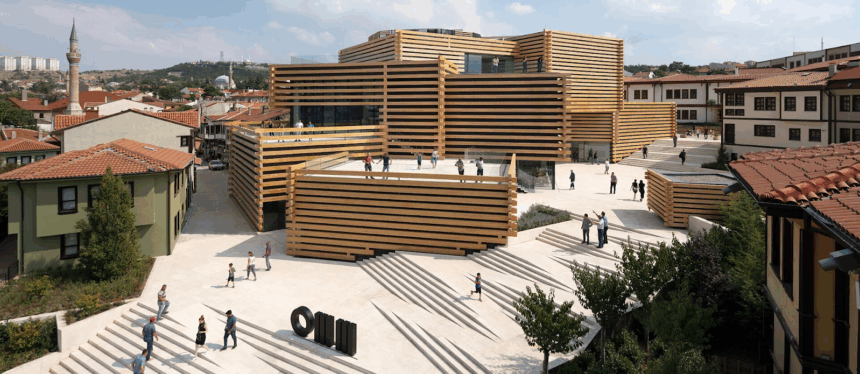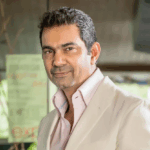In the city of Eskişehir, a quiet district rooted in timber trade has been reimagined through one of Turkey’s most forward cultural projects. The Odunpazari Modern Museum, designed by Kengo Kuma and Associates, does more than house art. It places architecture, memory, and creative ambition into dialogue, offering a public institution that is at once grounded and contemporary. The vision for the museum originated from businessman and collector Erol Tabanca and the architectural language remains the defining feature. The result is a structure that respects its setting while introducing a new visual and spatial language.
A District Reimagined through Wood and Light
Picture Courtesy- Turkey travel planner
Odunpazari translates as wood market, and the museum’s name is no coincidence. The surrounding neighbourhood is characterised by traditional timber houses, narrow lanes, and modest civic life. Rather than interrupting this urban fabric, the museum mirrors it in form and material. Stacked timber blocks compose the building, their size shifting in relation to function, with larger bases and progressively smaller volumes above. The composition feels sculptural yet local, contemporary yet familiar.
The use of laminated timber is central to the building’s identity. Both structure and cladding are made of wood, creating a sense of warmth and belonging. The material serves more than visual appeal. It connects to traditional Ottoman architecture and recalls the working history of the area. Inside, a tall atrium anchors the space, bringing in natural light and linking the galleries across floors. Circulation is open but intentional, with each volume housing artworks of specific scale and character.
A Growing Platform for Turkish Art
Picture Courtesy- The spaces
The museum opened in 2019 with a permanent collection that spans Turkish art from the 1950s onwards. With over one thousand works, the institution offers a timeline of modern and contemporary creativity across painting, sculpture, and installation.
While many museums are designed to impress from the outside, this one directs attention inwards. The spatial sequence allows artworks to breathe, and the timber interiors foster a relationship between visitor and material that is tactile rather than pristine. There is no attempt to overwhelm. Instead, the architecture supports the viewing experience with modest gestures and thoughtful transitions.
Interiors finished in warm timber surfaces promote a sense of proximity to the artworks, while the varied volumes ensure that each piece is displayed in an environment suited to its proportions and character. The design avoids theatrical effects and instead focuses on clarity of movement, proportion, and materiality.
Where Art Meets Civic Life
Picture Courtesy- Archello
What sets the Odunpazari Modern Museum apart is its integration with the life of the city. Located within walking distance of residential streets, local markets, and universities, it avoids the typical isolation associated with contemporary museums. Its entrance opens onto a pedestrian plaza where public activity continues. Visitors can move from exhibition to café, from art bookshop to outdoor space, without ever leaving the civic rhythm. This attention to public experience extends to the museum’s programme. It is a destination that adds cultural weight to Eskişehir while remaining accessible and relevant.
Why It Matters
Picture Courtesy- Which Museum
Odunpazari Modern Museum represents a significant shift in regional cultural investment by placing a major contemporary institution outside Turkey’s largest cities. The design does not attempt to recreate historical architecture but references it through proportion, material, and urban scale. The use of timber volumes recalls the craftsmanship of the area while expressing a modern structural system. The atrium ensures light penetration and spatial continuity. Public facilities and an adjoining hotel support longer stays and encourage cultural tourism.
The museum’s architectural strategy demonstrates that a building can both honour its location and project a new identity. It does so through material honesty, thoughtful massing, and an openness to the city around it, creating a cultural anchor that is deeply tied to its setting.
What emerges from all these elements is a museum that feels less like a destination imposed on a city and more like a natural evolution of its history and ambitions.

Ar. Pranjali Gandhare
Architect | Architectural Journalist | Historian








